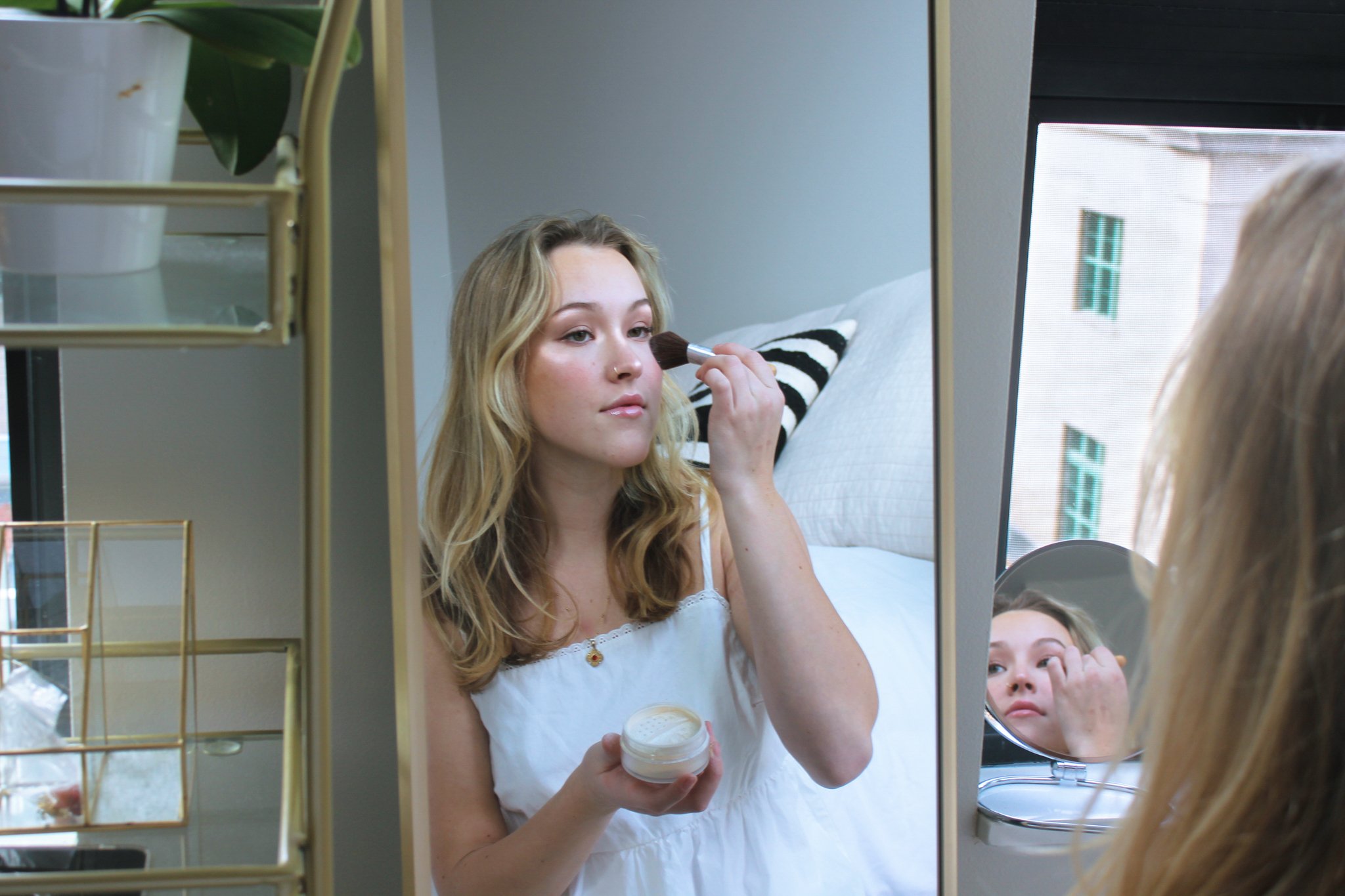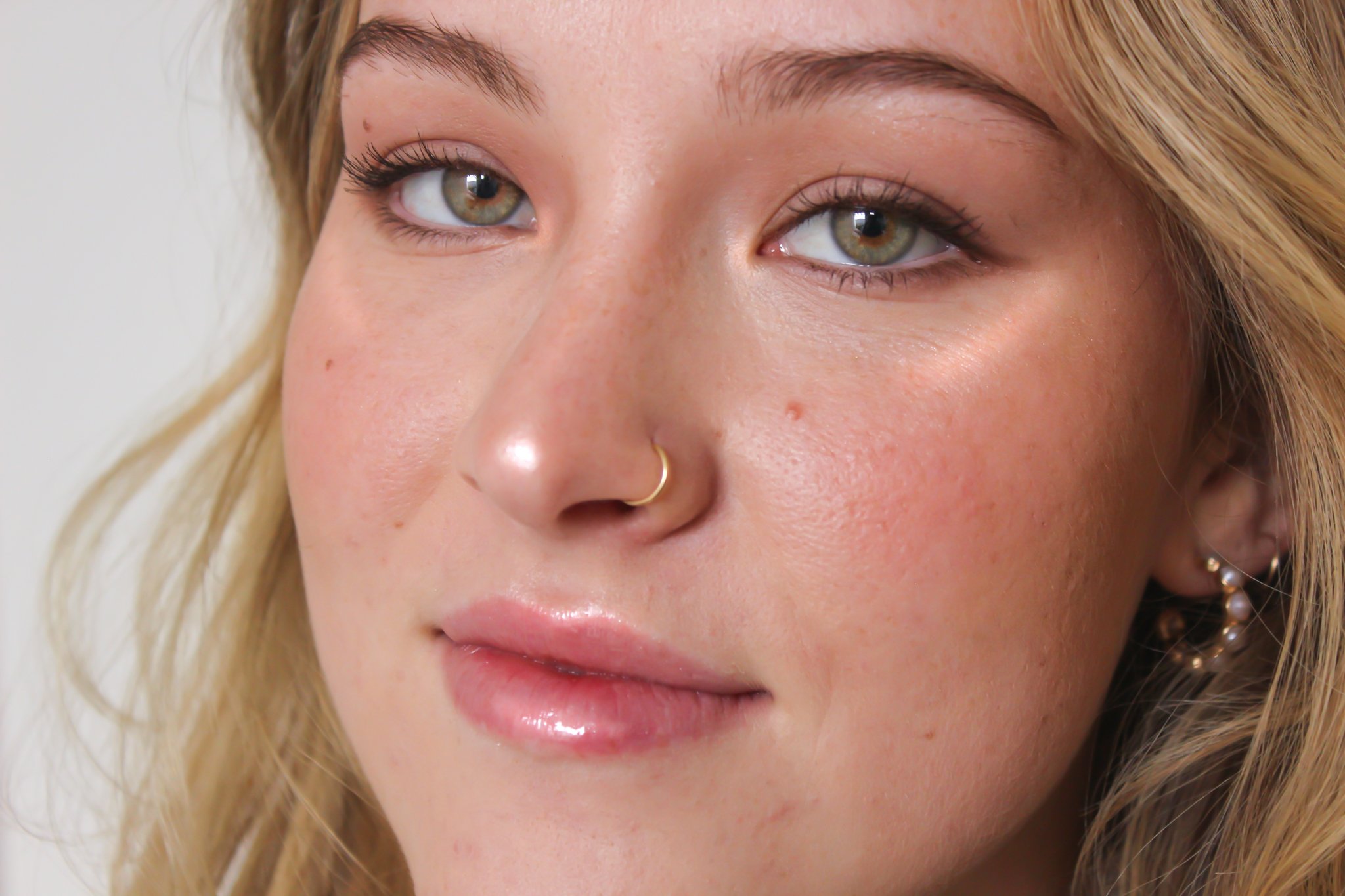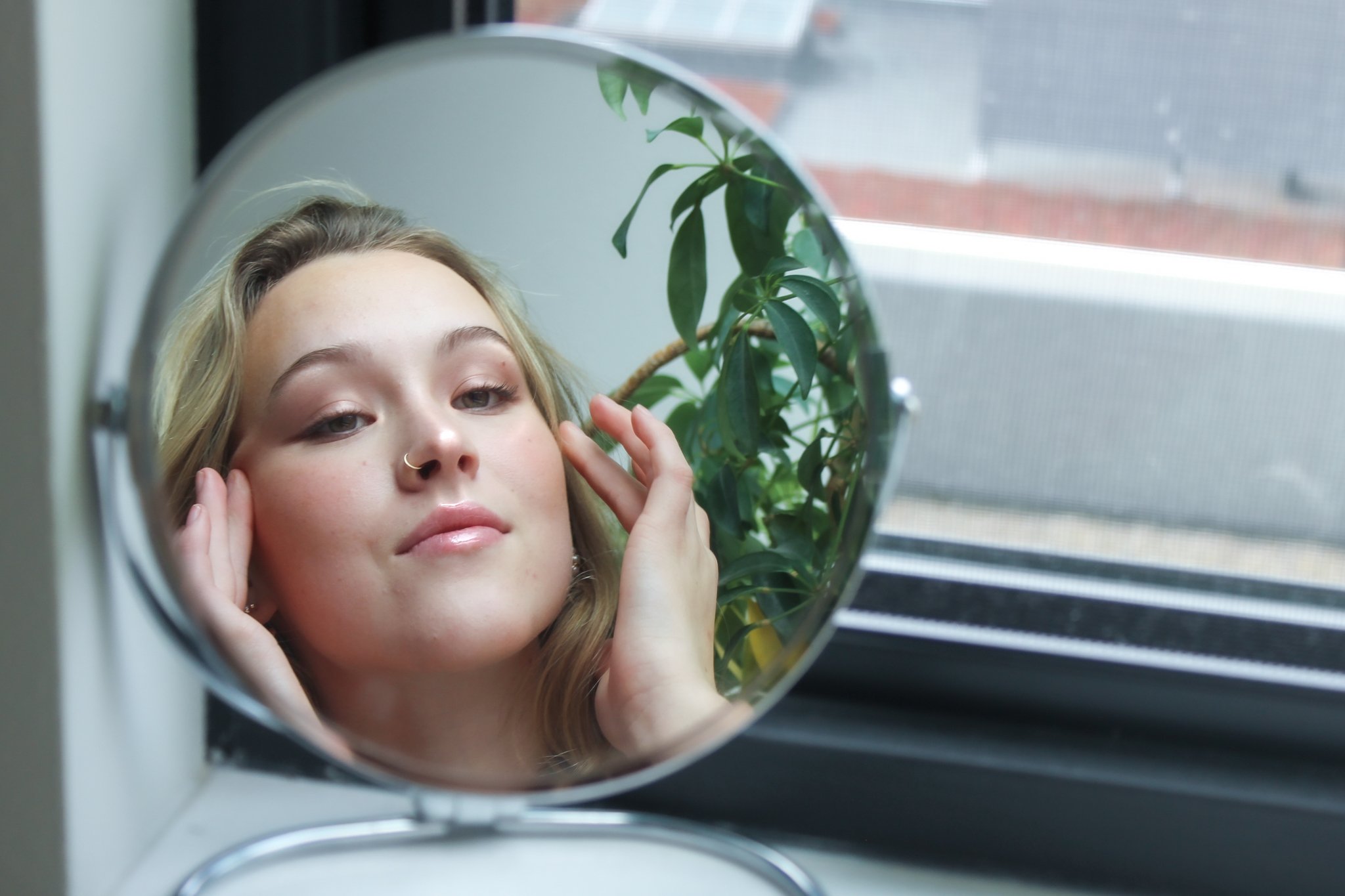Unmasking the Facade of Flawless Skin
“They put us at war with ourselves–a war we never wanted to be in–and the only casualties are our self-esteem and wallets.” -Coco Park, K-beauty influencer
Written by Alison Stecker, Culture Staff Writer
Photographed by Natalie Pricer, Contributing Photographer
Modeled by Alejandra Butcher
I’ve been battling with my skin since high school. Even with the endless number of dermatologist appointments, hormonal birth control and a bottomless pit of acne prescriptions, nothing seems to cure my acne or fulfill my dream of perfect skin. My entire day feels ruined the moment I spot a pimple on my face. I envy the luminous skin of other girls, while mine is oily and bumpy. No matter what skincare routines I indulge in, my skin never appears clear and smooth.
The glass skin K-beauty trend originated in Korea in 2013. It became a sensation in the United States four years later after makeup artist Ellie Choi’s skincare routine went viral on social media (Abelman, 2017). Her flawless face set an unrealistic standard that bouncy and clear skin was attainable for everyone.
The real goal of K-beauty has been lost over time, covered up by marketers who don’t want us to be happy with our skin. Coco Park, OG K-beauty influencer, explains that K-beauty’s initial purpose was for women to work toward the best version of their own skin because skin is different for everyone and glass skin is not universally compatible with all skin types (Park, 2017).
Markets rely on unrealistic beauty standards to keep us feeling insecure about our appearances. There will always be another trend for these companies to profit off of, whether it’s glass skin or skinimalism. Consumers feel compelled to purchase products to reach a difficult and often unattainable goal.
“They put us at war with ourselves–a war we never wanted to be in–and the only casualties are our self-esteem and wallets,” said Park (Park, 2017).
All the features we must erase in order to achieve glass skin actually exist to protect us: pores, dead skin cells and pimples. Pores serve as natural highlighters and outgoing channels for sweat. We would struggle to regulate body temperature without them, which could result in overheating (Defino, 2020). Dead skin cells aren’t completely dead because they store natural moisturizing factors and serve as skin barriers against external stressors. Board-certified dermatologist Dr. Ronald Moy says it takes 28 days for a skin cell to go to the top skin layer, so the mature dead skin cells keep the surface from drying out and provide more protection than our young fresh cells underneath (DeFino, 2020).
Lastly, pimples tell us what our bodies need. They serve as communicators between our bodies and our actions to alert us about changes in our lifestyle (DeFino, 2020).
“Cysts on my jawline? Time to take a hard look at my hormones… Inflamed cheeks? My body might be begging for a vegetable instead of another everything bagel with cream cheese,” said Jessica DeFino, freelance beauty and wellness writer (DeFino, 2020).
DeFino wishes she didn’t have to justify the existence of pores, dead skin cells and pimples because skin is skin—not glass. Our skin talks to us through these essential features deemed imperfections by society.
It would be beneficial to see a more accurate portrayal of skin on social media to help relieve the pressures women face to have glass skin. The lack of representation of common skin conditions may negatively affect mental health.
According to the BCC, the Advertising Standards Authority told influencers to avoid using misleading beauty filters on social media because they exaggerate the effect of skincare and may relieve self-criticism (Kilkita, 2021).
Lex Gillies, rosacea and skin positivity campaigner, agrees that the overabundant focus of glowing skin in the media impacts mental health.
“It perpetuates the belief that it is us, the ‘normal’ consumer, who is the problem… We’re made to believe that poreless, blemish-free, hairless skin is the norm and anything outside of that is wrong,” she said (Kilkita, 2021).
Gillies recently launched the Real Skin Club to spread skin positivity and teach anyone how to kindly treat their skin and embrace differences in their appearance (Kilkita, 2021). Winnie Harlow, a model with a skin pigmentation called vitiligo, has also redefined societal standards of beauty by sharing her stories on social media and representing individuals with skin conditions (Keyes-Bevan).
Glass skin is not an indicator of health, it’s an indicator of genes and luck. You’re still a healthy person even if you have acne, eczema or other skin conditions because those features don’t equal “bad” skin. They make us unique. Your flaws are beautiful and the state of your skin does not determine your self-worth. Although it may take some time to change your mindset, start small by doing something once a day that makes you feel good in your own skin. It’s hard to fully embrace yourself by covering up every little imperfection to fulfill an unrealistic beauty standard. But remember, not every routine is perfect or works for everyone. It might be time to give up the quest for glass skin and focus on what your skin needs instead of what society wants.
Sources:
Abelman, D. (2017, October 23). This Woman’s “Glass Skin” Skin-Care Routine Is Going Viral. Allure.
DeFino, J. (2020, October 16). Am I The Only One Who Doesn’t Want To Look Like Glass? Repeller.
DeFIno, J. (2020, March 12). Wait, are dead skin cells actually a good thing? Repeller.
Keyes-Bevan, B. Winnie Harlow: Her Emotional Story With Vitiligo. Health Insight.
Kikita, J. (2021, February 10). It Might Be Time For Us To Give Up The Quest For Glowing Skin. Refinery29.
Park, C. (2017, November 27). Idealistic, Hyped-Up, Unrealistic Standards: What Korean Beauty Is Really About. Beautytap.



